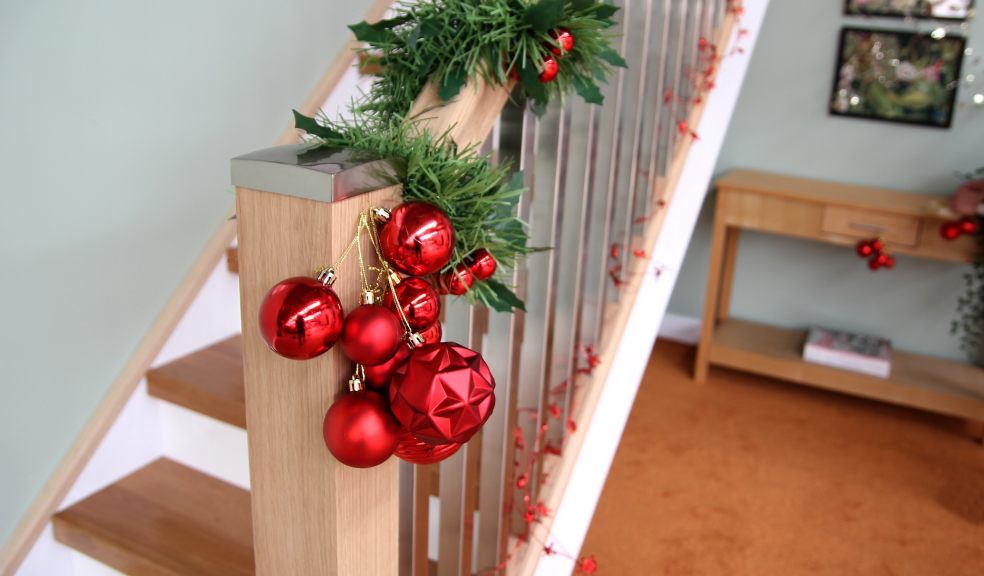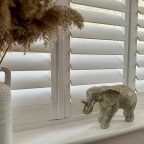
Five festive decorating tips to protect your hallway from costly damage
With Maria Carey officially defrosted, the John Lewis advert out and Christmas markets finally open, Brits will be starting to think about decorating their homes for the festive season. Whether you put yours up just before Christmas Eve, the start of advent or even earlier (like Stacey Solomon, Frankie Bridge and Michelle Keegan): Lucie Levesley, decoration expert and director at Jackson Woodturners has shared her decorating tips to make sure yours goes without a hitch.
Christmas decorating is a tradition which has lasted through the generations, transforming from simple wreaths and garlands to modern-day Instagram and Pinterest trends. However, there are some trends that expert decorators would never consider.
Lucie Levesley, director at Jackson Woodturners and hallway decor specialist said, “Hallways are often the first impression guests get when entering your home, so it’s understandable to want to create a festive feel in this space. Considering the long term impact of decorations is important though, otherwise your room might need redecorating in January to cover up any damage caused.
“Our customers often go all-out, investing in show stopping festive decorations at Christmas; however, some of the ideas we see from places like TikTok can cause costly damage to the carefully curated interiors we’ve created together. I’ve seen people put pins in beautifully crafted oak banisters, scratch hardwood floors and designer wallpaper with Christmas trees that are too big for the space, and heard of curtains which have been singed by candles or incorrectly hung fairlights.”
Five things an expert would never do when decorating their hallway at Christmas
1. Sticking or pinning baubles and garlands to banisters
Decorating banisters with evergreen garlands is a long standing festive trend. However, a recent TikTok trend has seen decorators cover their banisters completely in baubles. TikTokers like theflippedpiece have created gorgeous festive looks; however, sticking anything to your banister is a no-go, according to Lucie from Jackson Woodturners.
Pins, blu tac and tapes can permanently mark your banisters, meaning you may be left sanding, filling and repainting staircase parts. In some cases you may even need to replace handrails which can cost upwards of £15.99 (based on the type and size of the part needed). To avoid this, we suggest covering your handrail with a foam tube so that you can glue baubles and decorations to the foam directly. This can then be held in place with cable ties, that costs as little as £1 and can be safely cut away come January.
Lucie also points out that handrails are an important safety feature to avoid falls. So consider this before covering them up.
2. Blu-tacking Christmas card wall displays
Displaying Christmas cards sent by friends and family is nothing new however, decorators are getting increasingly created with such displays. Whilst blu-tacking Christmas cards to the wall in the shape of a tree or a snowflake looks cute, some products have high oil content which can leave walls marked or can cause paint to peel when removed. This is especially problematic for renters who might lose some of their deposits!
Come January you may be left with marks and need to repaint the room. This can be time consuming to do well and may require a new pot of paint purchasing. According to Which?, the average cost to hire someone to paint a hallway is £650 and takes three days. Even if you decide to paint yourself, a cheap tin of paint can be £20 or more, which might not break the bank but is an unnecessary expense and becomes yet another job on your to do list.
Instead of displays stuck to your walls directly, why not try hanging some ribbon, string or garlands which you can then clip cards onto. This way pins or blu tack can be hidden in the corners at the ceiling and along the skirting board, so that any potential marks are less visible. You could even tie the ribbon around a doorway so that it doesn’t need sticking to a wall at all. Festive ribbons can be found at your local market or online, along with cute card clips for just a few pounds. A bargain compared to a room repaint!
3. Squeezing trees into hallways
Recent data from John Lewis showed that Brits are increasingly having more than one christmas tree in their home. Almost a third of households (27%) now have a main tree for presents and a second tree elsewhere in the home. Popular places for the second tree include dining spaces, conservatories and hallways. The latter is often a narrow space, leaving a tight gap to fit a tree. Plus it is a prime spot for people brushing past, knocking it each time they walk by. Yet, it makes a huge impact when guests first walk through the door, “placing your tree at the foot of the stairs creates a picture perfect hallway” comments Lucie.
She adds, “Real Christmas trees tend to be wider at the bottom in relation to their height, making squeezing them into a narrow hallway challenging. It can often lead to scratched walls and staircase spindles, where branches brush against them. This may require fresh sanding, paint or wood finishing in the new year to mend the damage. In the absolute worst cases, expensive replastering or stair part replacements are needed. Plain oak, square shaped spindles cost around £5.99 each. Though not a huge expense it is avoidable if you take the right precautions when decorating .”
To avoid this, you could cut some of the back branches off, allowing the tree to sit closer to the wall without touching it. Alternatively, you might consider a fake tree as narrower options are available to better fit the space. Your existing gardening gloves and pruning shears will work for this.
If you do want to stick to the real thing, you could instead place a smaller potted tree on top of a table or console. Smaller trees like this can be purchased in your local Sainsbury’s for £6 or you could try a more luxury product like the Bloom & wild letterbox tree for less than £40.
4. Repurposing old fairy lights
The steady growth of thrifting and upcycling also extends to Christmas decor. Old, vintage looking Christmas lights are becoming popular again, with decorators digging out old strings of indoor lights from the back of the loft. Think multi-coloured flowers and star lights, alongside the more kitsch designs! Whilst these look great and add personality to your space, Fire Protection Online warns that older lights are often higher voltage (240v mains) and a greater fire risk than today’s low voltage LED lights. Once they are damaged these bulbs can blow causing electrocution and a greater risk of fire.
If you do plan on using retro lights, always check for damaged wires and that all bulbs are secure and working. Be aware that dried out christmas trees, wreaths and foliage can easily alight too, especially when next to hot bulbs which have been switched on all day.
Lucie however, recommends that newer LED fairy lights will cost you less in energy usage, are safer and are more durable. With just a quick Google you will see that plenty of retro designs are now available which use the newer LED technology yet give the same traditional, vintage Christmas feel.
Whilst finding old fairy lights might save you money initially, damage from fires could cost you from £500 to £70,000 (that’s according to AirTasker). Meaning that by purchasing safer LEDs for £14 from Dunelm, you could save £486 or more.
5. Fragrance zoning with scented candles
Scent-scaping or fragrance-zoning is the idea of using different room scents within each space in your home - with different scents, evoking a different feeling and environment. For example, relaxing scents to help with sleep and brighter, more lively scents for home office spaces to aid concentration. This trend has been seen all year round and with Christmas coming up, fans of fragrance-zoning will be looking to add warm, homely and nostalgic scents to their home. Is there anything more comforting than the smell of gingerbread as you walk into the entrance hallway and woody scents as you walk up the stairs?
Instead of relying on candles for each room which become a safety risk when left unattended, try using room sprays, diffusers and plug-ins. These will help create a mood enhancing atmosphere and LED candles can replace the open flames from scented candles. This way you can simply leave the diffusers and LEDs unattended whilst you get on with your day, avoiding singed curtains and smoke coated walls which can cause hundreds of pounds worth of damage.
A pack of six LED tealights can be purchased for as little as £1.99 from The Range. Diffusers and plug-ins vary in cost but can be found from just a few pounds in places like Aldi. Or you could try a luxury plug-in diffuser like those in Neom, Rituals and Marks & Spencer which are nearer £30-£100 in price.
Decorating the home at Christmas is one of the most exciting parts of the season, creating a welcoming environment for celebrating with friends and family. Hopefully the above tips and advice will help ensure your home looks just as good after the celebrations are over and costly mistakes are avoided.














